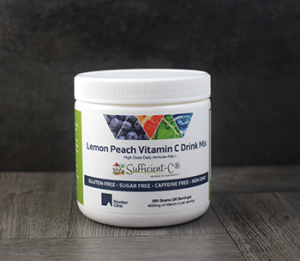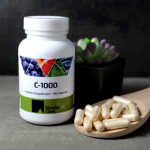Celebrating 20 Years of Health Hunter
By Richard Lewis
Over the past twenty years there have been almost 200 lead articles ranging from acupuncture to wellness (We haven’t done a Z topic yet). We have chosen a variety of articles to reflect the wealth of information that Health Hunter Newsletter has provided over the years. If you would like to read the articles that we have highlighted, past issues are available for you to read in the Mabee Library at The Center.
Imagination: a Tool for Change by Marilyn Landreth, MA., Nov/Dec. 1997 How many times have you intellectually known that you needed to improve your health by making a lifestyle change but just couldn’t quite make the change? Next time you might want to enlist the aid of your imagination.
We Seek to Serve, Rather than Fix or Help by Hugh D. Riordan, M.D., January 1999 When I help, I am very aware of my own strength. When I help, I have a feeling of satisfaction. When I serve, I have a feeling of gratitude. “When you help, you see life as weak. When you fix, you see life as broken. When you serve, you see life as whole.”
Unraveling Fibromyalgia by Ron Hunninghake, M.D., January 1998 The interesting thing about fibromyalgia is that it has become THE chronic illness. The Center’s approach is to do a very careful biochemical evaluation of the individual. Imbalances are corrected in the context of what we call a progressive lifestyle modification. This overall approach tends to lead to improvement in the patient’s health.
The Cytotoxic Test and Me by Ron Hunninghake, M.D., April 1998 The Cytotoxic test is not the answer to all medically difficult symptom complexes, but it can provide a powerful information piece to the clinical puzzle – one that oftentimes works quickly to begin alleviating long term symptoms.
Food for Thought for Kids by Donald R. Davis, Ph.D., September 1998 Can the typical diet of American children impair their learning, IQ, and behavior? Early studies with delinquents replaced sugary foods and white flour with fruit and whole grains. The study consistently found about a 40% reduction in behavior problems.
Headaches: The Center’s Approach by Hugh Riordan, M.D., October 1998 Although many additional laboratory tests may be indicated, the majority of the people we see at The Center will
have four tests: histamine, vitamin C, pyrroles, and adverse food reactions.
Diabetes and Nutrition: Take Charge! by Jeanne Drisko, M.D., October 1999 The foundation for diabetes care is a whole foods diet, followed by lifestyle and environmental changes. A high supply of carotenoids in the bloodstream is associated with very good insulin and glucose control. So, the more fresh fruits and vegetables you can eat, the better control you have on the insulin levels in your bloodstream.
Herbal Medicine 101 by Ron Hunninghake, M.D., July/August 2000 There is a scientific renaissance driving renewed interest in herbology. When used with your doctor as a means of self regulating, the use of herbs can be quite powerful, as part of an overall wellness plan.
Prostate Health by James A. Jackson, Ph.D., Nov/Dec 2000 As Dr. Buckman, Executive Director of the American Foundation for Urologic Diseases, says: “Men barely know how to spell prostate, let alone know what it does.” He also stated that men have a greater chance of something going wrong with their prostate than with any other organ in their body.
The Benefits of Chocolate by Donald R. Davis, Ph.D., June 2001 Our most popular candy is good for you, according to recent research on the health benefits of chocolate. Despite some minuses, mainly the sugar added to nearly all chocolate products, the key chocolate ingredient is a whole food rich in nutrients and phytochemicals.
Unhealthy Inflammation by Ron Hunninghake, M.D., June 2002 Healthy inflammation is not only desirable; it is essential to our survival. However, science is beginning to alert us to a more sinister, dark side of inflammation. This “unhealthy inflammation” underlies accelerated aging and degenerative organ decline.
Osteoporosis by Ron Hunninghake, M.D., October 2002 Osteoporosis is an epidemic problem. One third of American women will have a fracture related to osteoporosis in their lifetime. The idea that all you need for good, strong bones is calcium is not a sound way to think. Living cells need a wide array of nutrients.
Overcoming Depression by Hugh D. Riordan, M.D., February 2003 Depression affects about 17 to 19 million Americans each year. It is possible to become depressed because of the lack of a sufficient amount of a single trace element.
Obesity: the Epidemic of the 21st Century by Nina Mikirova, Ph.D., September 2004 Obesity is one of the greatest neglected public health problems of our time. Our genes have not changed over the past 100 years. As most of the world increased caloric intake and decreased physical activity, the same genes contribute to obesity and poor health.
CoQ10: the Energy Nutrient by Chad A. Krier, N.D., D.C., October 2004 CoQ 10 is involved in the manufacture of ATP, the energy currency of all body processes. The process of creating ATP occurs in the mitochondria (tiny powerhouses) inside our cells. CoQ1O is essential for optimum functioning.
Thirty Years with Dr. Hugh Riordan by Richard Lewis, February 2005 A co-learner wrote the following about Dr. Riordan, “There are thousands like me who have chronic illnesses that have come to a dead end with conventional medicine, only to find hope, education, and wellness from Dr. Riordan and the staff at The Center.”
Oh, My Aching Back by Chad Krier, N.D., D.C., April 2005 Back pain can result from injury or trauma of muscles, ligaments, joints, bones, fascia, and intervertebral discs. However, back pain also can come from seemingly harmless repetitive motion events. One of the main culprits behind low back pain is poor sitting posture.
Food Sensitivities Could be Hurting You by Rebecca Kirby, M.D., M.S., R.D., October 2005 There are any number of symptoms that one may attribute to food reactions or sensitivities. Reactions to foods can involve not only the skin and digestion but also the respiratory system, the nervous system, and the musculoskeletal system.
Intravenous Vitamin C and Cancer by Ron Hunninghake, M.D., March 2006 Irving Stone was an early thinker and writer about vitamin C. While most doctors accept that scurvy is a vitamin
C deficiency illness, few have made the jump to see vitamin C as a major player in the management of cancer.
Reducing the Risk of Dementia and Alzheimer’s Disease by Rebecca Kirby, M.D., M.S., R.D., April 2006 The most common cause of dementia in the U.S. is Alzheimer’s disease. In a Dutch study that looked at 1600 subjects over a 5-year period, the researchers found that the more fish consumed by the subjects, the better the brain functioned.





